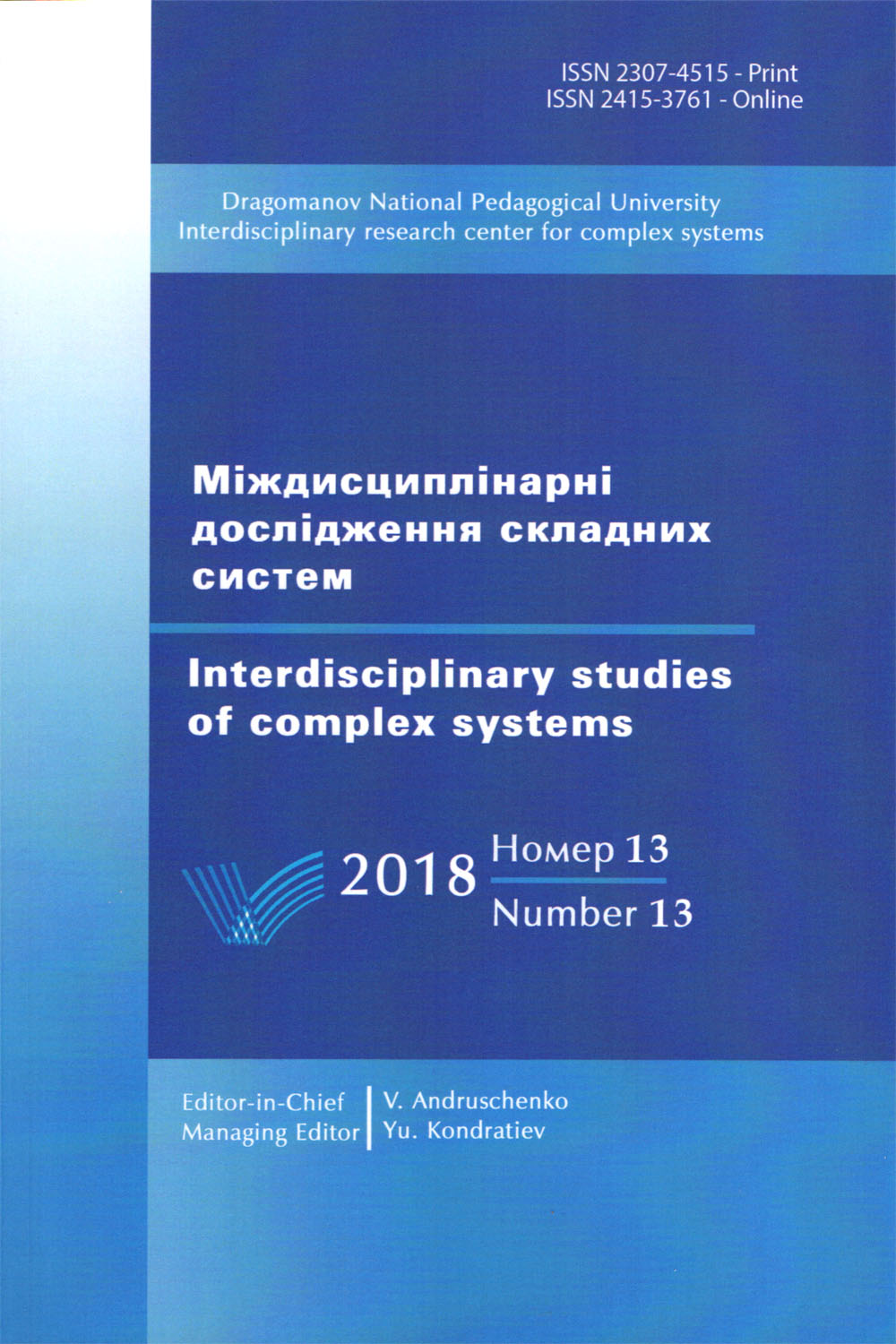Civilization of Bronze Age Crete
DOI:
https://doi.org/10.31392/iscs.2018.13.107Ключові слова:
Minoan Art, Minoan civilization, Arthur Evans, Crete, Palace of Knossos, Minoan frescoesАнотація
Usually, our knowledge of history, society, and culture is based on the written sources. However, the Minoan texts are extremely few. Thus, the Minoan art appears to be almost the only source of our knowledge of the Minoan civilization and culture. This paper attempts to analyze the phenomenon of the Minoan art of Bronze Age Crete. Discovered by A. Evans, the Minoan civilization — an Aegean Bronze Age civilization — flourished on the island of Crete and some other Aegean islands, in particular on Thera/Santorini with its settlement of Akrotiri.
For quite a long time, the Minoan civilization had been labeled as peaceful making reference to Minoan Thalassocracy, “Pax Minoica”, and a rather small number of fortifications. The lack of written information has given vent to researchers’ fantasy and the idea of the Minoan culture as the Golden Age of humanity was not accidental: the Minoan artists portrayed life as a continuous flow of beauty, an endless game, in which fleeting emotions and joy become the spring of happiness. Later, the conception of peaceful Minoans was re-evaluated. Evans’s reconstructions were subjected to serious criticism from the standpoint of contemporary archeology. However, we can “throw out the baby with the bath water”. We do not have to accept everything Evans stated about the Minoans, but we should be grateful for his profound inquiry into the unknown world of the human past. The Minoan art is important for contemporary humans because it draws attention to a harmonious life in the world of here and now; it carries an incredible power of inspiration and beauty; it brings a feeling of lightness, joy and a happy flight of a soul into our lives. And that really matters.
Посилання
Alexiou, S. 1969. Minoan Civilization. C. Ridley Trans. Herakleion: Spyros Alexiou Sons.
Aluzlk, T. 2005. Minoan Defensive Architecture in Palaikastro Area. Sbornik Praci Filozoficke Fakulty Brnenske Univerzity. 10:5-13.
Art, religious artifacts support idea of Minoan matriarchy on ancient Crete, researcher says. 2017. The University of Kansas. https://news.ku.edu/2017/06/09/art-religious-artifacts-support-idea-minoan-matriarchy-ancient-crete-researcher-says
Beard, M. 2009. Knossos: Fakes, Facts, and Mystery. The New York Review of Books. https://www.nybooks.com/articles/2009/08/13/ knossos-fakes-facts-and-mystery/
Christ, C. 1987. Why Women Need the Goddess. In: Christ, C. Laughter of Aphrodite: reflections on a Journey to the Goddess. San Francisco: Harper & Row. P. 117-132.
Cichon, J. M. 2013. Matriarchy in Minoan Crete: A perspective from archaemythology and modern matriarchal studies (Dissertatin, PhD). San Francisco, CA: California Institute of Integral Studies.
Collins, A. (Undated). Atlantis as Crete or Thera. http://www. andrewcollins.com/page/interactive/crete.htm
Daylong, T. V. 2016. The Desire for recognition in the Context of Francis Fukuyama’s Universal History. Anthropological Measurements of Philosophical Research. 10:69-77.
Daylong, T. V. 2017. Searching for the True Self: The Way of Nondual Wisdom. Anthropological Measurements of Philosophical Research. 12:715.
Evans, A. 1930. The Palace of Minos at Knossos. Volume III: The Great Transitional Age in the Northern and Eastern sections of the Palace: The Most Brilliant Records of Minoan Art and the Evidence of an Advanced Religion. Macmillan and Co., Ltd.; 1st edition.
Evans, J. 1943. Time and Chance: the Story of Arthur Evans and his Forebears. London.
Galanopoulos, A. G. and E. Bacon. 1969. Atlantis: The Truth Behind the Legend. Bobbs-Merrill.
. Gere, C. 2011. Knossos and the Prophets of Modernism. University of Chicago Press; Reprint edition.
Huebner, K. 2003. The Sanctuary Rhyton. Art and Art History Faculty Publications. Write State University. https://corescholar.libraries. wright.edu/art/2/
Hughes, B. 2007. Helen of Troy: The Story Behind the Most
Beautiful Woman in the World. Vintage; Reprint edition. https://erenow.com/biographies/helen-of-troy-the-story-behind-the-most-beautiful-woman-in-the-world/
Hughey, J. R., P. Paschou, P. Drineas, D. Mastropaolo, D. M. Lotakis, P. A. Navas, M. Michalodimitrakis, J. A. Stamatoyannopoulos and G. Sta-matoyannopoulos. 2013. A European population in Minoan Bronze Age Crete. Nature Communications. 4(1861):1—7. https://www.nature.com/ articles/ncomms2871
Jarus, O. 2010. Crete Fortifications Debunk Myth On Peaceful Minoan Society. Independent. https://www.independent.co.uk/life-style/history/crete-fortifications-debunk-myth-of-peaceful-minoan-society-1964033.html
Kondratieva, N. 2018. Eighth Day. Interdisciplinary Studies of Complex Systems. 12:92-107.
Lyubimov, L. 1980. The Art of the Ancient World. Moscow: Prosveshche-nie.
Plato. 2008. Timaeus and Critias. T. K. Johansen (Ed.), D. Lee (Trans.). Penguin Classics; Revised edition.
Ridderstad, M. (Undated). Evidence of Minoan astronomy and calendri-cal practices. arXiv:0910.4801 [physics.hist-ph]. Cornel University Library. https://arxiv.org/abs/0910.4801
Storozhuk, S. and I. Goyan. 2016. Greek as the Basis of Gender Stereotypes. Anthropological Measurements of Philosophical Research. 10:78-89.
Vasilakis, A. 2015. Cretan Fortifications (Part 1). https://www. archaeology.wiki/blog/2015/09/07/cretan-fortifications-part-1
Warren, P. and V. Hankey. 1989. Aegean Bronze Age chronology. Bristol: Bristol Classical Press.
Where was Atlantis? (Undated). Greek Legends and Myths. https:// www.greeklegendsandmyths.com/atlantis.html
Wolfe, J. 2015. Bull-Leaping Fresco. Scholar Exchange. Furman University. https://scholarexchange.furman.edu/art231/36/
Yefremov, I. 2011. Thais of Athens. Maria K. Trans. Independent Publishing Platform. https://knigogid.ru/books/638912-thais-of-athens/toread
##submission.downloads##
Опубліковано
Номер
Розділ
Ліцензія
Автори, які публікуються у цьому журналі, погоджуються з наступними умовами:- Автори залишають за собою право на авторство своєї роботи та передають журналу право першої публікації цієї роботи на умовах ліцензії Creative Commons Attribution License, котра дозволяє іншим особам вільно розповсюджувати опубліковану роботу з обов'язковим посиланням на авторів оригінальної роботи та першу публікацію роботи у цьому журналі.
- Автори мають право укладати самостійні додаткові угоди щодо неексклюзивного розповсюдження роботи у тому вигляді, в якому вона була опублікована цим журналом (наприклад, розміщувати роботу в електронному сховищі установи або публікувати у складі монографії), за умови збереження посилання на першу публікацію роботи у цьому журналі.
- Політика журналу дозволяє і заохочує розміщення авторами в мережі Інтернет (наприклад, у сховищах установ або на особистих веб-сайтах) рукопису роботи, як до подання цього рукопису до редакції, так і під час його редакційного опрацювання, оскільки це сприяє виникненню продуктивної наукової дискусії та позитивно позначається на оперативності та динаміці цитування опублікованої роботи (див. The Effect of Open Access).











